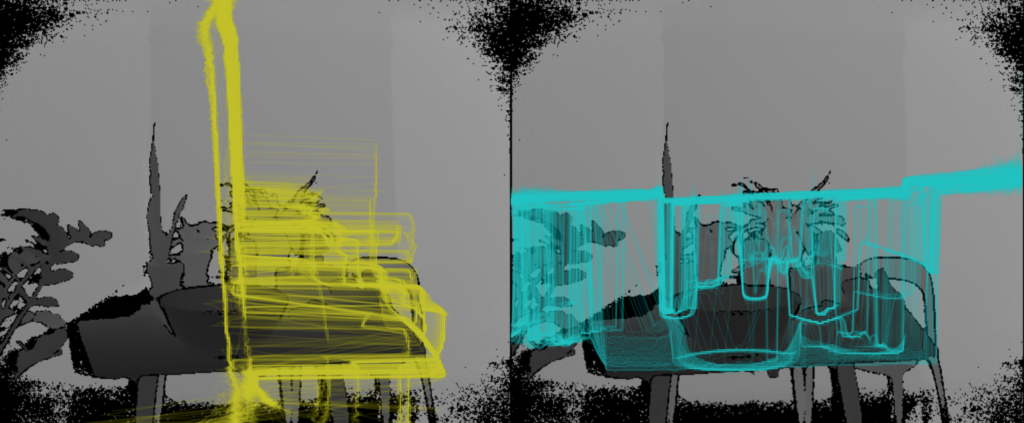Deep Body explores the body’s position relative to its context, but also the body itself as a context.
Only change in depth is registered. As such, to be seen, one must move. If you stand still, you’ll disappear. Body parts float, isolated from each other as they move, while the rest of the body is indistinguishable from the background. Context is invisible — the chair, table and plants are only visible when moved by the user. They don’t exist except in how they affect the body’s movement.
Technicals
Depth data is captured using a Kinect and is evaluated for change. If the color value at a particular index is different enough from the value in the previous frame, it is drawn to the screen. Change is further exaggerated by manipulating size and opacity of the resulting pixels. Pixels that are more different are larger and brighter.
